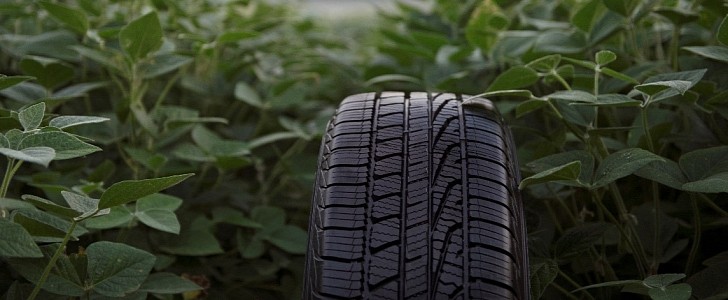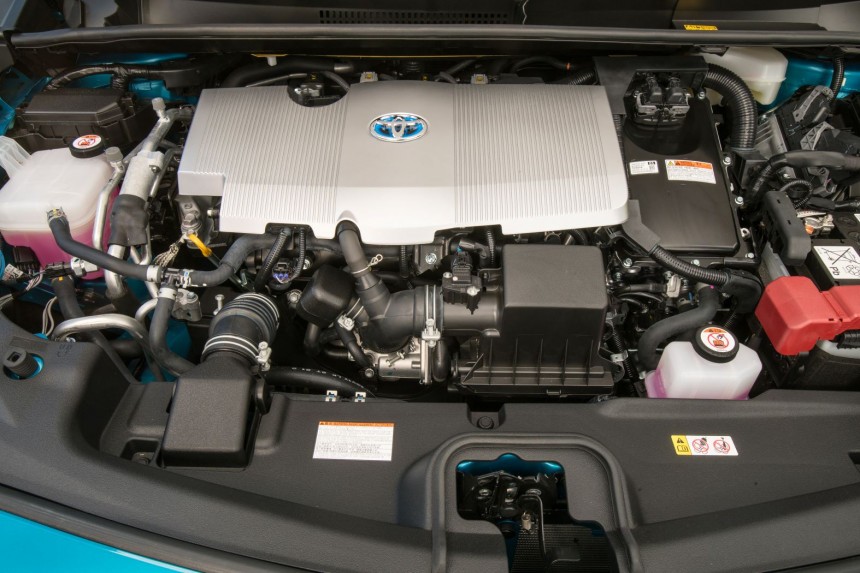With a global advancement toward environmentally friendly methods for manufacturing automotive components and to break away from the petroleum dependency man-kind has developed, industry leaders like Ford, General Motors and BMW have been utilizing soy-tech for some time now.
I don’t know about you, but the last time I checked, we eat soybeans. But what’s normal these days? Automotive manufactures have begun implementing soy in ways not usually found on our menu.
When I first heard the words 'soybean foam,' my mind instantly pictured a plate with some sort of soufflé-type dish. Maybe some slices of beef and a little garnish of asparagus. Not once did I imagine a vehicle component made of, well, beans. And foam is just the beginning.
But how do we go from sprout to sport? Chemistry. More chemistry than I can fit in this article. I was, however, able to understand that the process for producing the foam only uses the oil from soybeans, leaving the soy-meal to human or animal consumption.
That oil is then mixed in with other petroleum-based products to create the foam. Even though this is not a complete elimination of fossil-fuel products, it’s definitely a start. We have also made advancements in this type of technology and can now eliminate up to 50% of the fossil fuel derivatives used in making traditional foams.
Beginning with 2008 Ford has been utilizing soybean-based foam in the Mustang. And has been a key material in all Ford vehicles built in North America since 2011. From seat cushions, seat backs to headrests.
“We're utilizing about 31,251 soy beans in every vehicle. But toward the future, we'd like to put even more bio-based content in the foams." -Debbie Mielewski, Ford Plastics and Sustainable Research Division
Overseas, BMW and other auto giants like Toyota, seem to also be incorporating this type of tech in their production lines too. Even tire companies are researching applications into soy-tech.
Goodyear has been experimenting with soy-tech for some time too, and in 2017 announced the release of Assurance WeatherReady tires with a soy-based tread with enhanced traction.
But other uses for soybeans do exist. Technological advancements have enlarged the spectrum of soy applications as far as gaskets, seals, wiper blades, electrical insulation and a few other.
But why do all of this? The same reasons we’ve always tried new things. Necessity is the mother of invention. Fossil fuels, a major component in material production for a wide range of industries, is a finite resource. We need to no longer rely on finite resources and the possible logistical nightmares that can arise.
The need to discover and use sustainable resources in component production seems to be on everyone’s to do list these days.
However, downsides do exist. One major and frequently encountered issue is faults in electrical wiring. But the culprit isn’t the usual heat and exposure. Nope, its animals.
That’s right, folks, the soybean based compound in our new technology attracts a wide range of furry friends. Mainly squirrels and other small rodents. Reports worldwide, due to electrical issues, have found that our fellow critters just can’t resist the taste of our brand-new electrical systems.
Another downside to this is that it’s not completely fully petroleum-free. But it is a reduction in the amount we are currently using and only a matter of time before our technology offers us the possibility to kick the black-gold habit.
Down the road, our homes have even started to see soy-tech. Sound-proofing materials, insulation for homes, mattresses and pillows are among some of our daily bean-infused products.
Don’t forget the tofu!
When I first heard the words 'soybean foam,' my mind instantly pictured a plate with some sort of soufflé-type dish. Maybe some slices of beef and a little garnish of asparagus. Not once did I imagine a vehicle component made of, well, beans. And foam is just the beginning.
But how do we go from sprout to sport? Chemistry. More chemistry than I can fit in this article. I was, however, able to understand that the process for producing the foam only uses the oil from soybeans, leaving the soy-meal to human or animal consumption.
That oil is then mixed in with other petroleum-based products to create the foam. Even though this is not a complete elimination of fossil-fuel products, it’s definitely a start. We have also made advancements in this type of technology and can now eliminate up to 50% of the fossil fuel derivatives used in making traditional foams.
“We're utilizing about 31,251 soy beans in every vehicle. But toward the future, we'd like to put even more bio-based content in the foams." -Debbie Mielewski, Ford Plastics and Sustainable Research Division
Overseas, BMW and other auto giants like Toyota, seem to also be incorporating this type of tech in their production lines too. Even tire companies are researching applications into soy-tech.
Goodyear has been experimenting with soy-tech for some time too, and in 2017 announced the release of Assurance WeatherReady tires with a soy-based tread with enhanced traction.
But other uses for soybeans do exist. Technological advancements have enlarged the spectrum of soy applications as far as gaskets, seals, wiper blades, electrical insulation and a few other.
But why do all of this? The same reasons we’ve always tried new things. Necessity is the mother of invention. Fossil fuels, a major component in material production for a wide range of industries, is a finite resource. We need to no longer rely on finite resources and the possible logistical nightmares that can arise.
However, downsides do exist. One major and frequently encountered issue is faults in electrical wiring. But the culprit isn’t the usual heat and exposure. Nope, its animals.
That’s right, folks, the soybean based compound in our new technology attracts a wide range of furry friends. Mainly squirrels and other small rodents. Reports worldwide, due to electrical issues, have found that our fellow critters just can’t resist the taste of our brand-new electrical systems.
Another downside to this is that it’s not completely fully petroleum-free. But it is a reduction in the amount we are currently using and only a matter of time before our technology offers us the possibility to kick the black-gold habit.
Down the road, our homes have even started to see soy-tech. Sound-proofing materials, insulation for homes, mattresses and pillows are among some of our daily bean-infused products.
Don’t forget the tofu!












